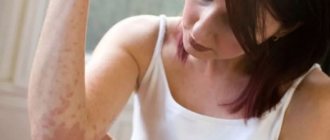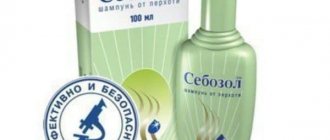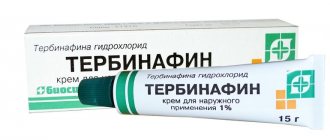- Initial appointment with a dermatologist
1200 ₽ - Calling a dermatologist to your home
4000 ₽
Pityriasis versicolor –
a recurrent disease that affects only the horny surface of the epidermis. The pathology is called “lichen versicolor” because the spots have colors: yellow, whitish, brown. The skin begins to peel off and spots appear in the summer in children and adults. Residents of countries with high humidity and warm climates are susceptible to pathology.
In Russia, skin formations appear in 15% of the population. These are mainly people from 15 to 40 years old, more often observed in men. Children under 7 years of age rarely get shingles. For treatment, contact a dermatologist at our clinic, he will conduct an examination and prescribe medications that will improve the patient’s condition.
Types of pityriasis versicolor:
- Spotty-flaky. During the period of spread, it affects the body in different places: behind the ears, in the groin areas.
- Erythematosquamous. Often observed in adults and children. The rash is beige or coffee-colored, without inflammation. At first the formations are small, but soon they increase in size. This type appears on the head. It worsens in autumn and spring.
- Follicular. Lesions appear on the legs, back, chest, and arms. The spots spread in the hair follicles, their size is up to 3 mm, and itching is observed. This form can form during antibacterial therapy or the use of steroids in people with diabetes.
- Inverted. Characterized by peeling, itching, redness. This species is not common. When the disease occurs, symptoms are not expressed; spots appear on the head.
If you experience formations on the skin, it is better to seek help from qualified specialists at our clinic. Quickly identifying the disease in its early stages will help prevent its spread.
Symptoms of pityriasis versicolor:
- Formation of pink spots. At first they are single, then they increase in size and merge. Rashes are observed on the stomach, neck, under the hair, on the chest.
- As the disease spreads, they become dark in color. May be red or brown. The colors vary on the affected areas, which is why lichen is called tinea versicolor. In some cases, the formations merge into one whole.
- After a certain time, peeling occurs. The scales resemble bran.
- Itching is observed, but not in all cases.
- After healing, white or light spots remain on the skin; tanning does not affect them; this is caused by cell damage as a result of fungi.
What is erythrasma
Erythrasma is a chronic bacterial disease affecting the epidermis layer in the deep folds of the skin. It is characterized by a long course - in some cases, symptoms develop for at least 10 years, without causing significant discomfort to the patient. The clinical picture of erythrasma is similar to a fungal infection of the skin, but modern dermatology classifies it as a group of pseudomycoses.
The following main stages are distinguished in the development of the disease:
- Progression. The first characteristic spots appear on the skin, their size slowly increases, and additional symptoms develop. In some cases, secondary infections occur. The spots gradually merge with each other, forming large areas of damage.
- Stabilization. New spots do not appear, and existing ones stop growing. Peeling of the skin begins. This stage is usually associated with a change in external conditions, for example, cold weather, during which the intensity of sweating decreases and the skin condition stabilizes.
- Exacerbation or relapse. Usually associated with the beginning of the warm season. But in the case of prolonged erythrasma, the disease constantly develops in waves, and after a slight decline its symptoms again actively appear.
- Remission. Occurs with a favorable microclimate, compliance with preventive measures and proper skin care. The color of the affected areas gradually returns to normal, itching and flaking disappear, and the skin is restored.
Without timely, well-chosen treatment, erythrasma can lead to the development of serious complications.
For example, it can provoke eczema and secondary infection in patients with diabetes or obesity. Also, the course of the disease is aggravated by increased humidity and contamination of the affected areas. As a result, its typical symptoms are complicated by burning, itching and pain.
Diagnosis of pityriasis versicolor
The disease is diagnosed by a dermatologist. He performs a visual examination of the patient, studies the presence of spots and their distribution, and makes a diagnosis at this stage. If the form of lichen is not pronounced, then the clinic specialist uses the following methods. Using a Wood's lamp, he makes several tests. After highlighting areas of the skin, they may change color to yellow-red or green.
To clarify the diagnosis, laboratory diagnostics will be required. Specialists using special equipment will be able to detect the presence of the disease after additional research.
Symptoms
The main symptom of pityriasis versicolor is the appearance on the surface of the skin of asymmetrically located round spots with clear boundaries . They can vary in size and tend to grow larger as the disease progresses. At later stages of pathology, the lesions are characterized by fusion.
The color of such spots is very different and can vary from whitish to pink-red. Layers of small scales are visible on the surface. The skin in these places thickens and changes its structure. The lesions are not characterized by itching or other unpleasant sensations. They do not tan when exposed to ultraviolet radiation and can disappear on their own over time.
Differential diagnosis of pityriasis versicolor with other diseases
To make a diagnosis, the doctor performs the following procedures:
- Conducting an examination under a microscope to determine the scraping. The specialist scrapes the scales from the skin area, processes it and examines it. Using a microscope, it is possible to detect spores and fungi that are round in shape. The mycelium threads are white in color and long in shape, like a thread.
- Balzer test. A 5% iodine solution is used, which is applied to or near the infected areas. This study will take time; the affected skin gradually acquires a different color.
Treatment of pityriasis versicolor
The dermatologist prescribes treatment depending on the nature and form of the disease, the characteristics of the lesion, the age of the patient, and the presence of other pathologies. Applies complex treatment, which includes ointments, sprays, creams, shampoos. They consist of components that effectively affect the disease. Depending on the complexity of the pathology, the patient is prescribed tablets. Therapy will help overcome lichen in a short time and eliminate complications.
For treatment, the doctor prescribes ointments that contain terbinafine. Treatment of the affected skin area is prescribed 2 times a day. This substance quickly destroys microbial cells and eliminates the appearance of new formations. Imidazole, clotrimazole and others are effective for treatment. The substances are included in creams and gels. Tolcyclate and ciclopirox are ointments prescribed to ensure that the pathogens quickly die.
When lichen appears in the hair, the doctor prescribes shampoos containing ketoconazole or nizoral. In the initial stages, patients are recommended salicylic and zinc ointments. The products quickly relieve itching. You should not use medications without consulting a specialist. Qualified doctors of our clinic, using modern equipment, will diagnose and prescribe a course of treatment.
A visit to a dermatologist is necessary 21 days after the prescribed treatment. The doctor will assess the patient’s condition, prescribe additional medications and preventive measures, these include physiotherapy and others.
Tinea versicolor
Pityriasis versicolor (pityriasis versicolor) is a long-term fungal disease affecting the epidermis, which is manifested by the appearance on the skin of pigmented spots of various shades: yellow, pink, brown, and characteristic pityriasis-like peeling. There are no signs of inflammation. Pityriasis versicolor is diagnosed using the Balzer iodine test, fluorescence examination and microscopy of exfoliating scales. Treatment is carried out with antifungal ointments and solutions. Pityriasis versicolor of a common form requires general antimycotic therapy.
Causes of pityriasis versicolor
• The causative agents are the fungi Malassezia furfur, Pityrpsporum orbiculare and Pityrosporum ovale, and these species differ in their ability to transform into one another; • Infection occurs only in isolated cases with close and prolonged contact with a patient; • At the same time, the likelihood of developing pityriasis versicolor is largely determined by predisposing factors.
Factors that create a favorable background in the body for the development of pityriasis versicolor are:
• Weakening of the immune system; • Increased sweating; • Endocrine disorders (diabetes mellitus, Itsenko-Cushing's syndrome, obesity); • Changes in the chemical composition of sweat; • Vegetative-vascular dystonia; • Violation of the skin barrier function with frequent use of antibacterial gels and soaps; • stressful effects on the skin (excessive tanning, solarium, etc.).
Symptoms of pityriasis versicolor
Most often, pityriasis versicolor appears on the skin of the back and chest. Less commonly, the neck, sides of the torso and abdomen are affected. In children and adolescents, spots can be localized on the skin of the extremities, in the armpits and on the scalp. There is no symmetry.
A patient with pityriasis versicolor, as a rule, does not notice any subjective sensations. In some cases, slight itching is observed on the affected skin areas. The occurrence of pain, burning or other unpleasant sensations indicates a secondary infection of the skin with bacterial flora.
Pityriasis versicolor has a long-term (several years) course. In the absence of systematic therapy after treatment, relapses of the disease may occur. Pityriasis versicolor often heals with exposure to sunlight. Areas previously affected by lichen do not tan and remain white against the background of tanned skin (pseudo-leukoderma).
Diagnosis of pityriasis versicolor
Pityriasis versicolor is often immediately diagnosed at a consultation with a dermatologist during examination and dermatoscopy of areas of skin with discoloration. To confirm the diagnosis, a Balzer iodine test is performed, which consists of applying a 5% alcohol solution of iodine to the skin. Due to the looseness of the affected areas of the epidermis, the skin in these areas absorbs iodine better and is colored more intensely than in healthy areas. With the same success, you can use solutions of aniline dyes for testing: brilliant green, iodine, fucarcin. The presence of Beignet's symptom or the “shavings phenomenon” is also determined: peeling of the skin when it is lightly scraped off on the surface of pityriasis versicolor spots.
It is also necessary to distinguish pityriasis versicolor from syphilitic roseola, and areas of pseudoleukoderma from syphilitic leucoderma. Syphilitic roseola does not peel off, has a pink color, and disappears when pressed. Syphilitic leucoderma in its appearance resembles a lace mesh, and not confluent spots of reduced pigmentation. To differentiate pityriasis versicolor from syphilitic manifestations, the patient may be prescribed the following tests: microscopy of a scraping for Treponema pallidum, PCR diagnosis of syphilis, or RPR test.
Treatment of pityriasis versicolor
Treatment is carried out on an outpatient basis until the manifestations of pityriasis versicolor completely disappear. Local antifungal agents are used: 5% salicylic ointment, 3-5% salicylic alcohol, 5-10% sulfuric ointment, 3-5% resorcinol alcohol, terbinafine, bifonazole, clotrimazole, cycloperox, terbinafine, naftifine, etc. Common pityriasis versicolor or its relapsing course is an indication for general antifungal treatment. It is carried out by ingesting antifungal drugs such as itraconazole, ketoconazole.
Prevention
Prevention of recurrence of pityriasis versicolor includes a repeated course of antifungal treatment, regular water treatments and therapy for hyperhidrosis. To prevent infection of the patient's loved ones, the patient's clothes and linen are disinfected. People who are in constant contact with the patient are examined using a fluorescent lamp.
Treatment and tests are ANONYMOUS!
Prevention of pityriasis versicolor
To reduce the disease, preventive measures play an important role. They include regular washing of skin areas, removal of sweat, sebaceous fat, and regular change of bedding and clothing. In hot weather, antifungal shampoos are an excellent method. They will eliminate the occurrence of relapses. The specialist prescribes products for regular hair washing. As a preventive measure, it will take 5 to 7 days to use the drugs. The skin should be wiped with salicylic alcohol every day.
It is better to wash things not with powders, but with soap, adding soda to the water. You can avoid deprivation; for this you need to strengthen your immune system, eat right, and take vitamins once a year. Experts recommend playing sports and taking walks in the fresh air for treatment. In case of illness, it is recommended to include vegetables, herbs, fermented milk products in food, and exclude spicy, sweet and smoked foods.
Gastrointestinal disorders can cause pityriasis versicolor, so you need to undergo a course of treatment.
Causes of pathology
Corynebacteria, which are the causative agents of the disease, are normally always present on human skin. Moreover, they provoke the development of pathology only under certain, favorable conditions. Corynebacteria do not penetrate deeper than the epidermis, and also do not affect nails and hair. Since the appearance of erythrasma is directly related to increased sweating, the disease most often manifests itself in the hot summer season.
Among the main reasons for the development of erythrasma are:
- hyperhidrosis;
- deviation of the normal pH of the skin to the alkaline side;
- diaper rash, constant friction and mechanical damage to the skin;
- dermatitis and other skin diseases;
- neglect of personal hygiene rules;
- wearing synthetic, overly warm clothing;
- the use of low-quality care products or the abuse of soap with an antibacterial effect, which destroys the natural protection of the skin.
Erythrasma is transmitted by contact, most often after the use of clothing, bedding and personal hygiene products of the patient. You can also become infected during sexual intercourse, when visiting a pool or bathhouse, and when walking barefoot on the ground or beach. At the same time, it is not always possible to accurately determine the source of infection, because the carrier may not have obvious external manifestations of the disease in the form of characteristic spots and peeling.
Complication of pityriasis versicolor
The pathology affects the upper layer of the skin, but is often severe. It affects internal organs.
In case of severe itching, the patient scratches the severely damaged skin. All this causes discomfort and leads to inflammation, in addition to infectious pathology. Contact a specialist immediately. You can’t just start the disease and start solving the problem. A specialist will help and prescribe medications to improve the condition.
If the disease returns after all measures, we recommend that you undergo examination by our specialists.
Pityriasis versicolor in children
The disease is not typical for children under 6 years of age. During this period, the skin has protection mechanisms that prevent the dermis from being exposed to moisture and high temperatures. However, if caring for the baby is not correct, parents lubricate the skin with oils: shea butter, cocoa, then this disrupts the functioning of the defense mechanisms. For this reason, the disease appears in preschool age.
In children during the prepubertal period, hormonal changes begin in the body. The skin is very sensitive to high humidity and exposure to the sun, like adults. Thanks to changes, fungi can provoke the appearance of disease.
Ringworm in children occurs with the same symptoms as in adults. The treatment is no different. If redness appears, it is advisable to immediately consult a doctor. The specialist will conduct an examination and prescribe a drug that is suitable for the child’s age. It is not recommended to use the products without the advice of a specialist, as this can lead to negative consequences.
Lichen rosea (or Zhibera)
A little-studied type of disease that usually develops against the background of a weakened immune system in the autumn or spring season. The risk group in this case consists of girls who have a hormonal imbalance in their body.
The manifestation of lichen is the appearance of round or oval pink and light brown spots on the chest, shoulders, back, sides, and skin folds. Dermatological changes, accompanied by itching and flaking of the skin, may go away on their own within a few weeks, however, when the first signs of the disease appear, it is recommended to consult a doctor to rule out the presence of syphilis similar in symptoms.
Pityriasis versicolor during pregnancy
As a result of hormonal changes, the appearance of pathology is possible, but it does not harm the mother and fetus. The disease causes discomfort, but self-medication and folk remedies are unacceptable. If pathology appears, contact a dermatologist, he will choose treatment and, if necessary, prescribe diagnostics. Pregnant women are prescribed therapy for ringworm, taking into account the danger of the situation.
The doctor prescribes drugs that do not enter the bloodstream, does not prescribe anti-fungal tablets, they are toxic and harmful to the unborn child. Nizoral is prescribed; it is not recommended to use the medicine without a prescription.
Many dermatologists advise delaying the full course of treatment until after the baby is born. The fungus is not harmful to the fetus and will not affect its development. Oral medications are prohibited during breastfeeding, as they can pass into the milk and harm the baby's health.
Why should you contact our clinic?
Dermatologists of the highest category
Experienced dermatologists in Moscow. Experience of specialists from 15 years.
Modern equipment
Modern equipment from the world's best manufacturers.
Expert class equipment
Ultrasound is performed using expert-class equipment manufactured by General Electric, SONY, Mindray.
Tests and ultrasound on the day of treatment
Tests, x-rays, ultrasound with interpretation, dressings on the day of treatment in Moscow.
Consultations for adults and children
A network of dermatological clinics in Moscow. Clinics near the metro.
Experienced doctors
Our experienced doctors with over 15 years of experience. Candidates of Medical Sciences.






